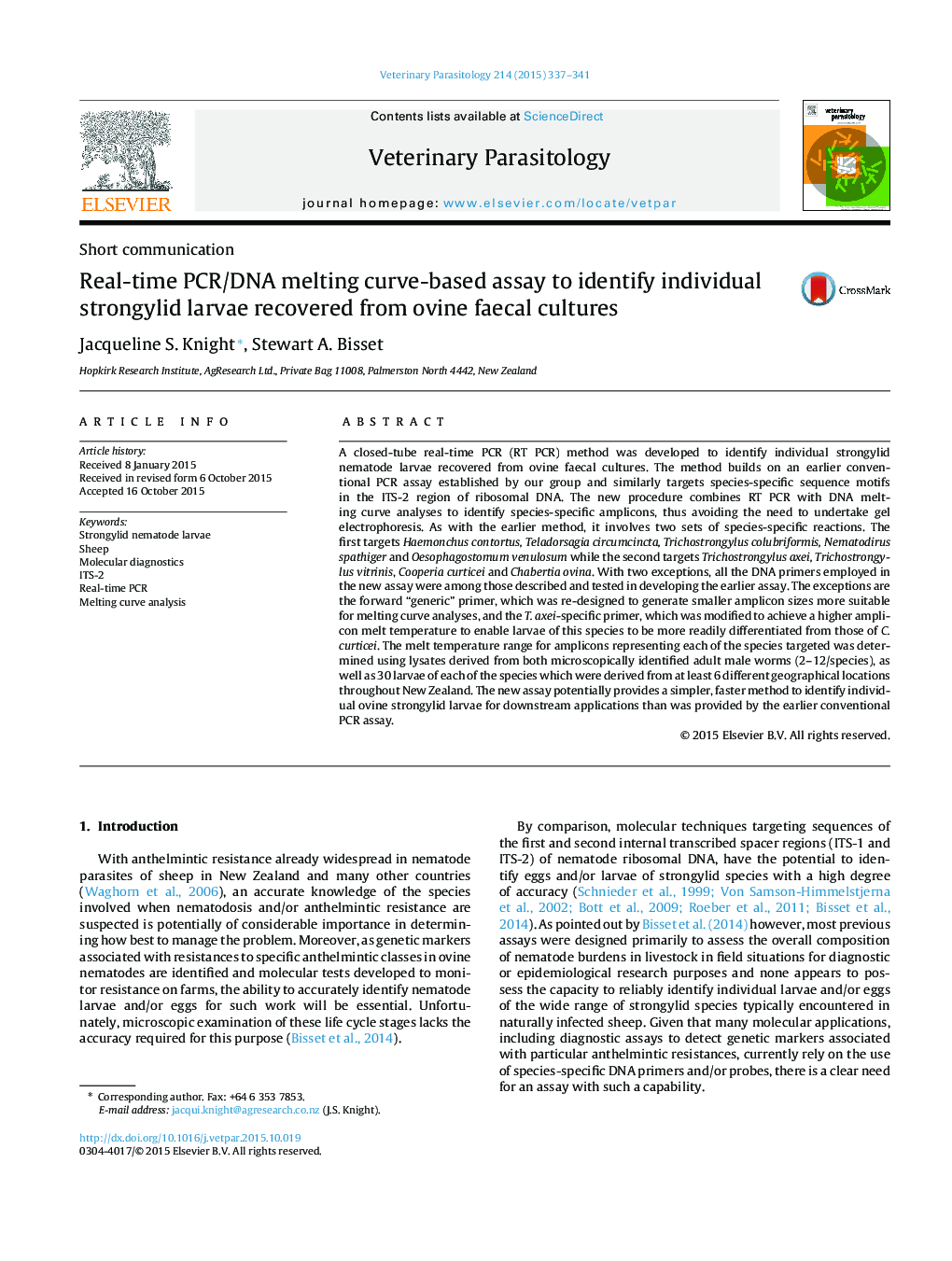| کد مقاله | کد نشریه | سال انتشار | مقاله انگلیسی | نسخه تمام متن |
|---|---|---|---|---|
| 2469919 | 1555662 | 2015 | 5 صفحه PDF | دانلود رایگان |

• Individual nematode larvae are identified by a closed-tube real-time PCR assay.
• The assay identifies 9 of the nematode species commonly infecting sheep.
• Real-time PCR DNA melting curve analysis is employed.
• The assay provides a simpler, higher throughput method than conventional PCR assays.
A closed-tube real-time PCR (RT PCR) method was developed to identify individual strongylid nematode larvae recovered from ovine faecal cultures. The method builds on an earlier conventional PCR assay established by our group and similarly targets species-specific sequence motifs in the ITS-2 region of ribosomal DNA. The new procedure combines RT PCR with DNA melting curve analyses to identify species-specific amplicons, thus avoiding the need to undertake gel electrophoresis. As with the earlier method, it involves two sets of species-specific reactions. The first targets Haemonchus contortus, Teladorsagia circumcincta, Trichostrongylus colubriformis, Nematodirus spathiger and Oesophagostomum venulosum while the second targets Trichostrongylus axei, Trichostrongylus vitrinis, Cooperia curticei and Chabertia ovina. With two exceptions, all the DNA primers employed in the new assay were among those described and tested in developing the earlier assay. The exceptions are the forward “generic” primer, which was re-designed to generate smaller amplicon sizes more suitable for melting curve analyses, and the T. axei-specific primer, which was modified to achieve a higher amplicon melt temperature to enable larvae of this species to be more readily differentiated from those of C. curticei. The melt temperature range for amplicons representing each of the species targeted was determined using lysates derived from both microscopically identified adult male worms (2–12/species), as well as 30 larvae of each of the species which were derived from at least 6 different geographical locations throughout New Zealand. The new assay potentially provides a simpler, faster method to identify individual ovine strongylid larvae for downstream applications than was provided by the earlier conventional PCR assay.
Journal: Veterinary Parasitology - Volume 214, Issues 3–4, 15 December 2015, Pages 337–341